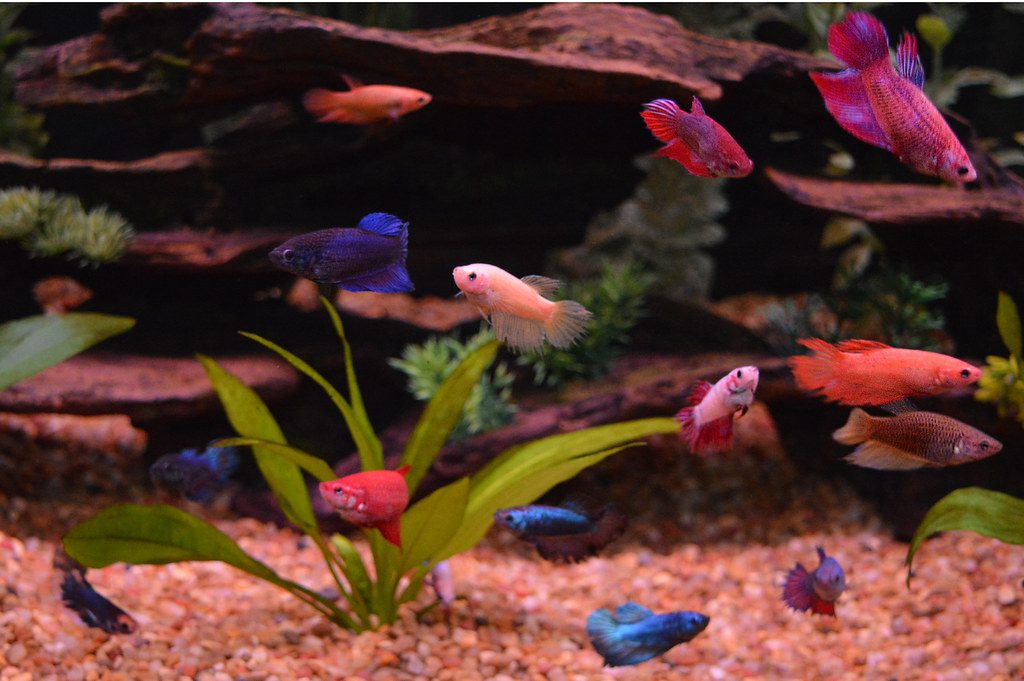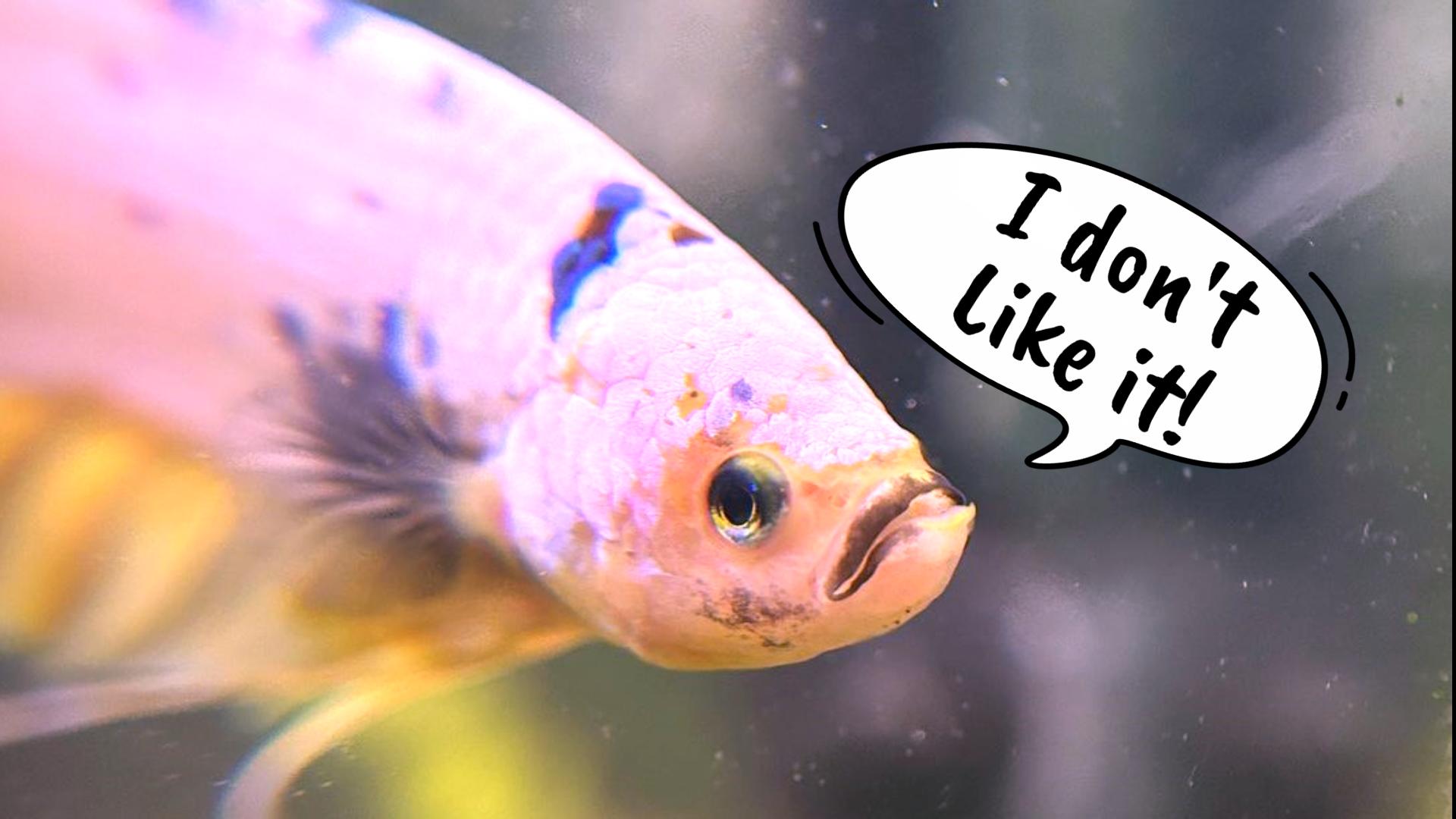Are you thinking about starting a betta sorority tank? In this blog, we’ll explore some important considerations for setting up your betta sorority and provide you with valuable tips on how to properly care. We have answered several interesting questions about sorority tanks and how to keep them thriving. So keep watching till the end without skipping. Let’s get started.
What Is A Betta Sorority?
In general, “sorority” refers to a group of animals with similar interests and ways of surviving. A betta sorority refers explicitly to a group of female betta fish living together. It has become popular among fish lovers as it is more fun to keep many colorful female betta fish in a single tank. That being said, female betta sororities can be an exciting tank when you do it right. There are many fish keepers who have created beautiful sorority tanks with multiple female betta fish. The key to a successful sorority tank is picking the right betta fish for your sorority tank, providing a proper aquarium setup, and quickly addressing any tank problems.
#1. Can I have a betta sorority tank?
Yes, the Betta sorority is a considerable option for everyone if you follow certain rules. It’s important to ensure that each fish has plenty of space to swim and live comfortably. Overcrowding can lead to stress and problems, even though female betta generally have fewer fighting issues. It’s important to keep an open mind when creating a Betta sorority. There is a possibility that some female Betta fish may cause problems. If the betta becomes aggressive, be prepared to make changes and potentially separate the fish or move away from the sorority setup.
#2. How Many Betta Can I Have in a Sorority?

There are many online debates and opinions about a Betta sorority. My recommendation for a Betta Sorority tank is to have at least 3 female betta fish and a maximum of 10 betta fish. The tank size should be at least 10 gallons; I don’t suggest starting with anything smaller than that. In general, one betta fish needs at least 2 gallons of water in a sorority tank. This means you can have up to 5 female betta fish in a 10-gallon tank for a healthy and stress-free environment. If you add more fish to the sorority, you can increase the tank size accordingly. These are just my primary suggestions based on my experience with sorority tanks. Please share your thoughts in the comments section.
#3. Why is it exciting to have a sorority tank?
Betta fish are territorial, making it challenging to keep them as a group. Many Betta keepers dream of having a large tank with multiple peaceful male Betta fish, like a community tank. Unfortunately, this setup doesn’t work well with male Betta fish. Female Betta fish especially recent breed varieties have become more colorful and vibrant, making it exciting to keep them together. It has been observed that female Bettas tend to be more peaceful towards other females with different colors. This opens up the opportunity to create a sorority tank with a variety of colors and patterns of female fish together.
#4. Can a Male Betta Live in a Sorority?
While it is possible to have one male in a sorority tank, I still do not recommend it. In my opinion, it will only bring stress and tension to the tank without any real benefits. Personally, I suggest avoiding male betta fish in a sorority tank mainly because of their aggressive nature. Another issue that arises when males are in a sorority tank is their breeding behavior. Introducing a male Betta can trigger breeding instincts in both male and female fish. This can destabilize the sorority tank and may lead to aggression, stress, or unsuccessful breeding attempts. The male may become overly focused on breeding and harassing females. Males building bubble nests and attracting females can easily disrupt the sorority tank environment. This may even result in breeding failures due to other fish trying to eat eggs and fries.
#5. What happens if you put a male Betta in a sorority?
Male Betta fish are known for their territorial nature and may become aggressive towards the female Bettas in the sorority tank. Males may chase, nip, or even harm females, causing stress and injuries. The presence of a male Betta can create a stressful environment for females. They may feel threatened or constantly on edge, which can negatively impact their overall well-being and health. While some people argue that their male betta fish have a soft nature, it is possible that even some females are aggressive, and enjoy nipping and bullying their male counterparts. Given these potential complications, I would not recommend keeping male Bettas in a Sorority tank.
#6. How to avoid fighting in a sorority tank?
First and foremost, provide a spacious tank with ample room for each fish to swim freely. A larger tank with hiding spots and decorations can reduce aggression. In order to prevent one fish from dominating the others, it’s important to add all female Betta fish to the tank at the same time. Enrich the tank with hiding spots, plants, and toys to keep the fish occupied and minimize aggression. Remember that each Betta has its own personality, so aggression may still arise despite these measures. If excessive aggression or injuries occur, separate the aggressive female fish as necessary.
#7. How to address female bully fish in your tank?
Monitoring and removing bully fish in a female Betta sorority tank is essential to maintaining a peaceful and healthy environment. Pay attention to any fish that consistently acts aggressively. If you suspect a particular fish to be a bully, consider setting up a separate observation tank setup using a breeding box or something similar in your tank. This will allow you to closely monitor the suspected bully without disrupting the main sorority tank. Added additional hiding spots, plants, and decorations to the sorority tank can help create spaces for the targeted fish to retreat and escape aggression which can reduce bullying.


#8. Can a betta sorority really work?
There are conflicting opinions on whether a betta fish sorority really works. Some fish keepers state that two betta fish should never share the same tank, except for breeding. However, others have kept a community tank with a small group of female bettas without problems. It is best to start your betta sorority when they are young and less likely to fight. Another helpful tip is to obtain your female bettas from the same breeder or parent. This way, they will have been raised together in the same tank since they were fry, allowing them to become familiar with each other as they mature into adults.
#9. How to introduce female betta to a sorority?
It’s best to introduce all female bettas in a sorority tank at the same time, which reduces territorial disputes. If you already have other fish in the tank, let the female bettas’ plastic bags float beside each other. This will enable them to see their new tankmates and also prevent temperature shock. After around 10 to 15 minutes, release each betta into the tank and closely observe their behavior for signs of aggression. Ideally, the fish will settle down quickly and peacefully. Another idea is to introduce aggressive betta to the sorority tank after all other betta fish are introduced and settled. In this way, it may prevent aggressive bettas from becoming dominant. If she still continues to attack her tankmates, it may be best to keep her in a separate tank to maintain peacefulness in the sorority.
#10. Can I breed Betta fish in a Sorority tank?
Breeding Betta fish in a sorority tank is generally not recommended. Sorority tanks provide a peaceful and harmonious environment for female Betta fish to coexist. The presence of a male Betta fish can disrupt social dynamics and lead to territorial conflicts among females. If you are interested in breeding Betta fish, it is best to set up a separate breeding tank for that purpose. This will provide the necessary space, conditions, and control for successful breeding and fry care.
#11. What are the best tank mates for sorority tanks?
When choosing tank mates for a betta fish sorority, it’s crucial to select companions that create a harmonious tank environment. One option is to include bottom-dwelling fish like corydoras catfish or otocinclus catfish, which occupy the lower levels of the tank and contribute to a cleaner tank by consuming leftover food. Additionally, adding snails such as nerite snails or small shrimp-like cherry shrimp can benefit the tank on algae control and added diversity.


#12. How about keeping wild female Bettas in groups?
There are over 70 officially recognized wild betta species. Many of these species are less aggressive than domestic Betta splendens and have the potential to be kept in pairs or groups, including combinations of males and females. For instance, Betta mahachaiensis, Betta smaragdina, and Betta embellish are often mentioned as suitable for pairing or grouping with one male and multiple females. However, some fish keepers have found that these species can be equally aggressive. Therefore, it’s crucial to consider individual temperament and conduct thorough research to ensure the compatibility and well-being of any Betta species when kept in pairs or groups.
Does “Aqua Diary” recommend female sorority tank setups?
Female sorority tanks can be enjoyable and visually appealing to have a variety of colorful females together. However, it’s important to note that this setup may not be suitable for everyone. While female betta fish have a less tendency to fight than males, there are still potential issues to consider. Creating a tank where fish may fight can lead to stress and suppression. It’s crucial to monitor for signs of stress such as decreased appetite and hiding. Disease transmission is another concern when housing multiple fish in a confined space. While betta sororities have potential drawbacks, proper care and attention can create a healthier and more enjoyable environment for the fish.





